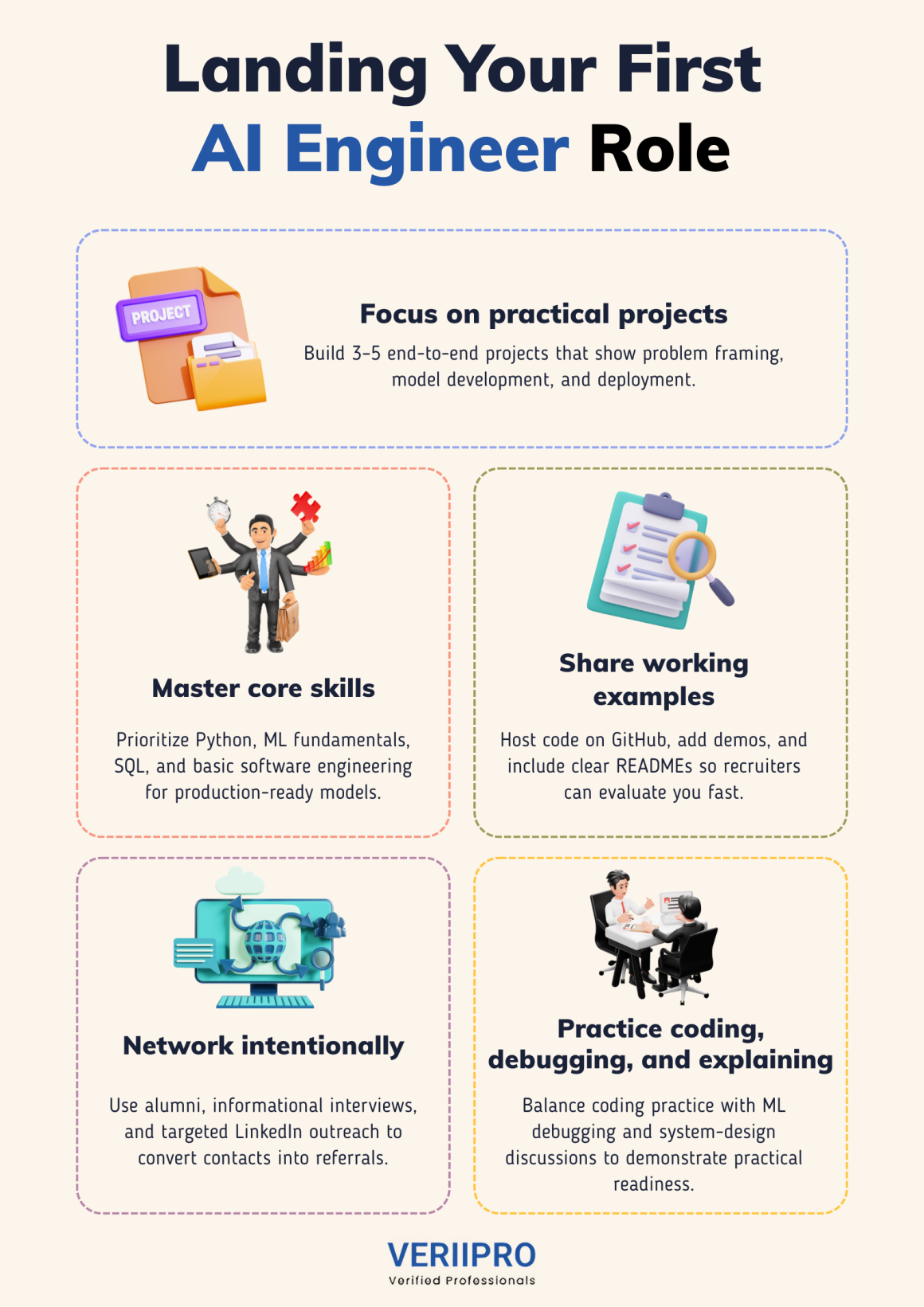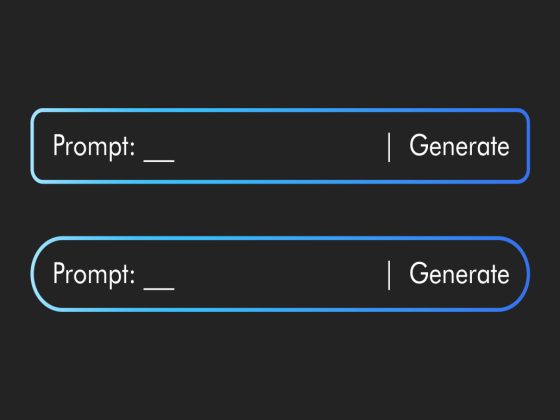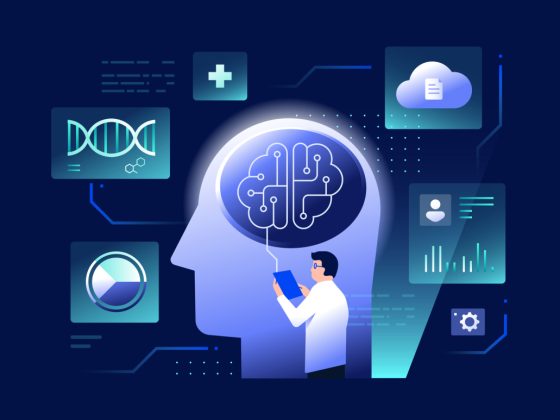Breaking into AI engineering is a rewarding challenge: it blends math, software engineering, and creativity. Whether you’re a recent graduate, a career-changer, or a self-taught developer, landing that first AI engineer role takes strategy, deliberate practice, and a portfolio that proves you can move projects from idea to production. This guide walks you through practical steps to position yourself for success in the modern AI job market.

Know what employers are actually hiring for
AI engineering is a blend of machine learning, software engineering, and systems thinking. Recruiters look for people who can build, evaluate, and deploy models-not just write notebooks. Key areas include model development, data processing, model evaluation, and deploying models as services or APIs. Entry-level compensation is attractive: median and entry-level ranges reported on major job sites like Glassdoor show AI engineers earn well above many other entry-level tech roles, reflecting strong market demand. Glassdoor
Build a skills foundation (the essentials)
Start with core skills you’ll use daily. Prioritize Python (and libraries such as NumPy, pandas, scikit-learn, and PyTorch/TensorFlow), math fundamentals (linear algebra, probability, optimization), basic data engineering (SQL, data cleaning, simple pipelines), and software engineering practices (version control, testing, basic system design). Authoritative skill lists and learn-paths from education platforms outline these essentials and sensible learning sequences. DataCamp
Create a focused, interview-ready portfolio
Your portfolio should show end-to-end projects that answer a real question. Aim for 3–5 polished projects on GitHub with a clear README that explains the problem, approach, and results; reproducible code and run instructions; and metrics plus visualizations. Contribute to Kaggle competitions or replicate a small paper, then demonstrate production-minded work (containerization or a simple API). Practical guides on building a portfolio and community discussion on competition platforms explain why quality and reproducibility matter. MediumKaggle
Learn to tell a hiring story
For interviews, craft concise stories about your projects: what problem you solved and why it matters, the approach and trade-offs, and which metrics show success. Practice both behavioral and technical storytelling so hiring panels can see how you reason, learn, and make trade-offs under constraints.
Use targeted job-search tactics
Apply smart: target teams where your project experience maps to their stack (for example, CV teams if you have computer-vision projects). Use university or bootcamp career services to open doors to internships or junior roles. Set up job alerts and follow company engineering blogs and developer channels-many roles and hiring signals appear there first. Show applied skills directly on LinkedIn and your resume with links to demos and repos so recruiters can evaluate you quickly.
Network with intent
Connections matter-especially for first roles. Informational interviews, alumni outreach, and targeted, polite LinkedIn messages can convert into referrals. Recent reporting highlights that networking and adaptability remain major differentiators for early-career candidates navigating a tight market, so be proactive, polite, and specific when you reach out. AP News
Prepare for interviews the right way
Balance coding practice with ML system design and practical model debugging. Expect take-home projects, live coding, and conversations that probe how you’d deploy and monitor models in production. Demonstrate testing habits, an understanding of model performance trade-offs, and clear communication about limitations.
Keep learning—make it visible
AI changes fast. Take short, project-based courses and professional certificate programs to learn applied workflows, follow accessible research summaries, and keep your portfolio current. Employers reward continual, applied learning-coursework helps, but portfolio evidence of applied skills is the strongest signal for first roles. Coursera
Final practical checklist
- Build 3 production-oriented projects (GitHub + README + demo).
- Prepare 5 compact stories that explain your projects and decisions.
- Polish your LinkedIn and resume-link to projects.
- Practice ML-focused interview questions and system design.
- Network: 3 outreach messages per week to alumni or engineers in your target companies.
Closing Thoughts
Stay persistent, build production-minded projects, practice concise stories that highlight your decisions, and grow your networking intentionally – research shows the right, moderately weak connections often open doors. Balance hands-on interview prep (coding, model debugging, and system design) with visible, continuous learning so hiring managers see both current skills and growth. Looking for opportunities in AI and engineering? VeriiPro is here to help!









